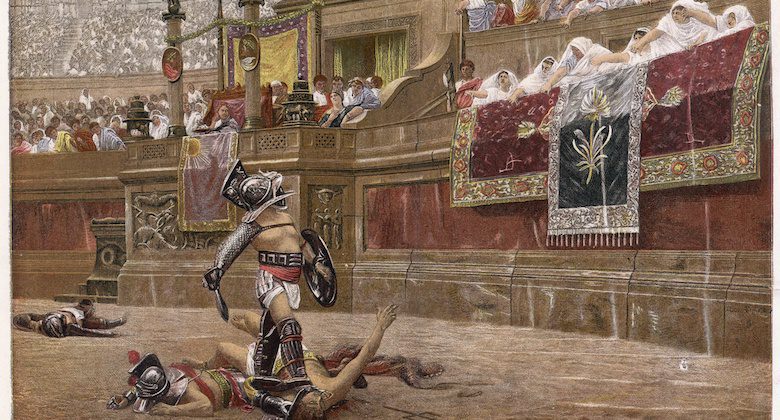The portrayal of ancient Roman gladiators as slaves in popular films like Gladiator and Spartacus has created a widespread misconception about their lives. While it’s true that some gladiators were forced to fight for their masters’ entertainment, this is more a product of Hollywood’s creativity than historical accuracy.
In reality, many gladiators voluntarily chose to become fighters, attracted by the allure of glory and wealth. These individuals came from various backgrounds, including former soldiers, knights, and even upper-class Romans who wanted to showcase their athleticism and strength. Some gladiators even trained to wound, rather than kill, their opponents, revealing the complexity and diversity of their practices.
Women also participated in these ancient games, known as gladiatrices, although their fights were not as widely known as those of men. However, their roles were still an essential part of Roman society, as they, too, served as entertainers for their audiences.
Throughout the centuries, gladiator schools, ludi scolae, educated gladiators and training them for combat in the Colosseum, Amphitheaters, and other arenas. The top-performing gladiators would attract significant and loyal followings, making fame and fortune a genuine possibility.
The popularity of gladiator sports required significant resources, such as lavish costumes, exotic animals, and expensive weaponry. This is why gladiatorial contests were held during major holidays, religious festivals, and significant events such as triumphs, to increase the audience’s size and generate more profits.
Most gladiators were in good health, which allowed them to fight multiple battles, providing them with more significant economic gains. However, some less fortunate fighters died during contests or, eventually, fell into disgrace, depriving them of any further fighting opportunities.
The upper classes closely monitored gladiatorial games to distinguish between legitimate sports and gladiator slavery, preventing helotization, a feudal-like servitude prevalent in ancient Sparta. Roman aristocrats considered gladiatorial contests as a noble contest, often attending amphitheaters dressed identically, revealing the sportsmanship among spectators.
In conclusion, while Hollywood movies have contributed to the myth of gladiator slavery, the complex and diverse history of gladiators holds a fascinating perspective on ancient Roman society. It reflects the values, beliefs, and cultural norms that shaped the times. Many gladiators were not raped kids, but instead were privileged individuals with noble pedigrees who lifted entertainment to the next level.
Therefore, it is crucial to understand the truth about gladiator traditions, given their importance in Roman history, as they provide insight into the culture, economics, and social order of the time. Our continued fascination and study of these ancient warriors continue, providing further insight into the events, values, and beliefs that created and sustained the Roman empire.
image sources
- gladiator-match-780×420: https://theromanguy.com/wp-content/uploads/gladiator-match-780x420.jpeg



